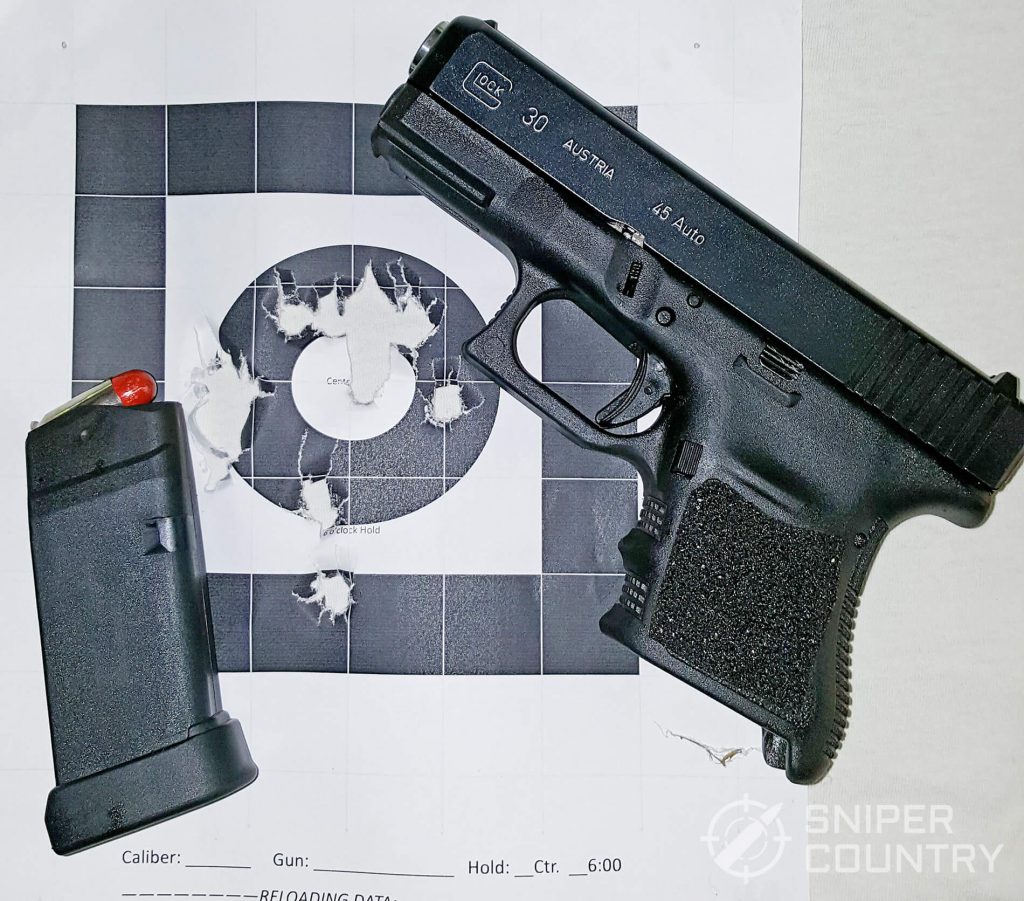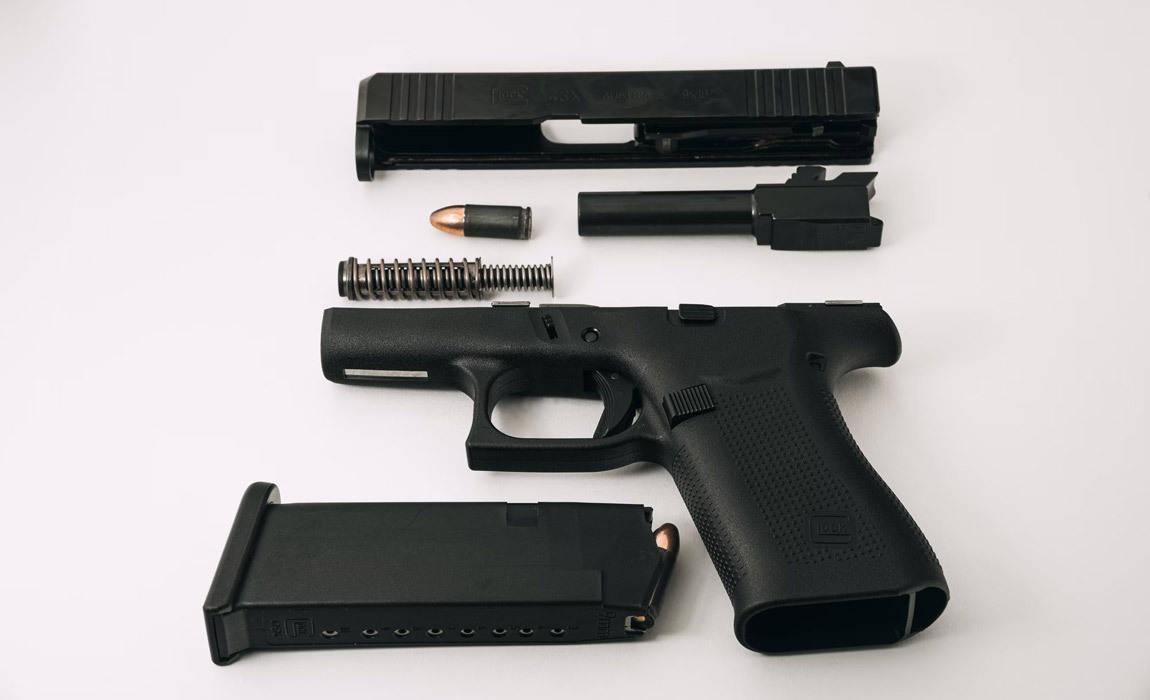.45 Caliber Weapons - The M1911 (Colt 1911 or Colt Governmt) is a recoil-operated, semi-automatic pistol chambered for the .45 ACP cartridge.
By 1940, the official US military designation was the .45, M1911A1 automatic pistol for the original model automatic pistol, .45, M1911, adopted in March 1911, and the improved M1911A1, which entered service on the 26th. Pistol, caliber .45, automatic, Vietnam War era M1911A1.
.45 Caliber Weapons

Designed by John Browning, the M1911 is the most famous design to use the short recoil principle in its original design. The pistol was widely imitated and this operating system became the dominant form of 20th century and almost all modern Carterfire pistols. It is popular with civilian shooters in competitions such as the International Defensive Pistol Association and the International Practical Shooting Confederation.
Gun Legends: 5 Best .45 Acp Pistols On The Planet
The US Army purchased approximately 2.7 million M1911 and M1911A1 pistols during its service life. The pistol served as the standard weapon for the United States Armed Forces from 1911 to 1985. It was used extensively in World War I, World War II, the Korean War, and the Vietnam War. The 9mm Beretta M9 pistol replaced the M1911A1 as the standard US military weapon in 1985. However, the US Army did not replace the M1911A1 with the Beretta M9 until October 1986, and due to the M1911's popularity among users, it was not completely phased out. Modern derivatives of the M1911 are still used in the US. Used by the Army Special Forces, US Marine Corps, and parts of the US Navy.
The M1911 pistol arose in the late 1890s as a result of the search for a suitable self-loading (or semi-automatic) pistol to replace the type of revolvers in service.
The United States rapidly adopted new weapons; The same decade saw the adoption of several new pistols and two new service rifles (the M1892/96/98 Craig and the M1895 Navy Lee), as well as a series of revolvers for the Army and Navy by Colt and Smith & Wesson. The following decade would see a similar pace, including the adoption of several other revolvers and the intense search for a self-loading pistol that would culminate in the official adoption of the M1911 at the end of the decade.
Hiram S. Maxim designed a self-loading rifle in the 1880s, but was preoccupied with submachine guns. Nevertheless, his application of the principle of using the RG cartridge for reloading led to several self-loading pistols in 1896. The design caught the attention of various militaries, each of which started programs to find one that would suit their troops. In the United States, such a program leads to formal testing at the beginning of the 20th century.
Wp4521 1911 .45 Auto
Self-loading pistols were tested in the 1899s and early 1900s, including the Mauser (C96 "Broomhandle"), Mannlicher (Mannlicher M1894), and Colt (Colt M1900) efforts.
This led to the purchase of 1,000 DWM Luger pistols, which are bottled cartridges chambered in 7.65mm Luger. In field tests, it ran into some problems, most notably power outages. Other governments have filed similar complaints. Accordingly, DWM produced a larger version of the round, the 9×19mm Parabellum (known as 9×19mm NATO), a necked down version of the 7.65mm round. In 1903, 50 of them were also tested by the United States Army.
During the Philippine-American War, American units fighting the Tausug guerrillas in the Moro Rebellion in Sulu used the standard Colt M1892 revolver chambered in .38 Long Colt for the rigors of jungle warfare, especially in power outages. Because the Moros had a high martial spirit and often used drugs to suppress the feeling of pain.

The US Army briefly reverted to using the M1873 single-action revolver in .45 Colt caliber, which was the standard in the late 19th century; Heavy shooting was found to be more effective against charging tribesmen.
Glock's Soft Shooting .45: The Glock Model 21
The problems prompted Chief of Army Staff Gerry William Crozier to authorize further testing of the new service pistol.
1904 After testing the round efficiency of the Thompson-Lagarde pistol, Colonel John T. Thompson said the new handgun "must be no smaller than .45 caliber" and be semi-automatic.
This led to the testing of pistols by six arms manufacturers in 1906 (i.e. Colt, Bergmann, Deutsche Waff and Munitionsfabrik (DWM), Savage Arms Company, Noble, Webley and White-Merrill).
Of the six designs submitted, three were quickly scrapped, leaving only the Savage, Colt, and DWM designs chambered for the new .45 ACP (Automatic Colt Pistol) cartridge.
These Five .45 Caliber Guns Are The Best Ever
All three still had issues that needed improvement, but only Colt and Savage resubmitted their drafts. There is some debate as to why the DWM took off—some say they were prejudiced, and that the DWM design was primarily used as a "wiper boy" for Savage and Colt pistols.
But it's not as good as buying a 1900 DWM design on Colt & Steyr Tries. Regardless, from 1907 to 1911, a series of field trials were conducted to decide between the Savage and Colt designs.
Among Colt's successful directions, its designer John Browning in 1910 D. 6,000 bullets were fired from one pistol in two days. When the gun started to heat up, it was immersed in water to cool it down. The Colt rifle ran flawlessly, while the Savage design had a 37.

Following its success in trials, the Colt pistol was officially adopted by the Army on March 29, 1911 and designated the Model 1911, later renamed the Model 1911 in 1917. And "M1911" is placed in the middle. 1920 Civilian Shooting Director began production of M1911 pistols for members of the National Rifle Association in August 1912. About 100 pistols were sold by Springfield Armory and Colt to the N.R.A.
Engineers Build The World's First Real 3d Printed Gun
The M1911 was officially adopted by the US. Adopted by the Navy and Marines in 1913. The .45 ACP "US Army Model 1911" was used by US Army cavalry and infantry during the punitive campaign against Pancho Villa in Mexico. 1916
In early 1917, the Colts Pet Firearms Company and the US. A total of 68,533 M1911 pistols were produced by Springfield Armory for the US government. assigned to the armed forces. However, the need to greatly expand the US military and the resulting increased demand for weapons in World War I led to the expansion of production to contractors other than Colt and Springfield Armory, including Quebec's Remington-UMC and North American Arms.
Several other manufacturers were awarded contracts to produce the M1911, including the National Cash Company, Savage Arms Company, Kern Brothers Manufacturing of Montreal, Burroughs Adding Machine Company, Winchester Repeating Arms Company, and Lanston Monotype Company, but the signing resulted in Armistice's. the contract was canceled before any pistols were produced.
Battlefield experience in World War I led to some other minor external changes that ended in 1924. The new version was designated the M1911A1 revised type in 1926, with the stipulation that serial numbers exceeding 700,000 and below must be assigned. M1911.
Perfect Classic 5.0 · Stp By Prommersberger · Premium Weapons · Top Sports Guns
The original design of the M1911A1 featured a short trigger, frame cutouts behind the trigger, an arched mainspring housing, a long grip trigger safety (to prevent shearing by the hammer), a front sight, a short hammer spur, and a simplified grip check (eliminating the "double diamond" reliefs).
These changes were subtle and mostly to make the pistol easier to shoot for people with smaller hands. No significant internal changes were made, parts remained interchangeable between the M1911 and M1911A1.
David Marshall Williams of the US Ordnance Office developed a .22 practice version of the M1911, using a floating chamber to recoil the .22 long rifle, just like the .45 version.

As the Colt Service Ace, it was available as a pistol and as a conversion kit for .45 M1911 pistols.
M1911 Patch .45 Caliber Gun Pistol Second 2nd Amendment Right Hook Patch Blue*p
Before World War II, 500 M1911 Model 1912 Submachine Guns were produced under license by the Norwegian arms factory Kongsberg Vaffabrik. Production then shifted to a modified version of the 1914 pistol model and unofficially known as the "Kongsberg Colt". The M/1914 pistol is known for its unusual extended slide, which was designated by the Norwegian Ordnance Authority. 22,000 were produced between 1914 and 1940, but after the German occupation of Norway in 1940, production resumed and 10,000 were produced as Pistole 657(n) for the German armed forces.
Between 1927 and 1966, 102,000 M1911 pistols were produced in Argentina as the Sistema Colt Model 1927, originally by the Dirección Geral de Fabricaciones Militres. A similar rifle, the Ballester-Molina, was also designed and produced.
The M1911 and M1911A1 pistols were also ordered from Colt or produced in modified form by several other countries, including Brazil (M1937 contract pistol), Mexico (M1911 Mexican contract).
Sig p365 tulster holster, sig p365 iwb holster, sig holsters p365, sig p365 sas holster, sig p365 xl holster, sig p365 hybrid holster, appendix holster sig p365, safariland holster sig p365, sig p365 belt holster, sig p365 holster, sig p365 purse holster, sig sauer p365 holster
0 Comments